Introduction
The Republic of South Africa is a country located at the southern tip of the African continent. It borders the countries of Namibia, Botswana, Zimbabwe, Mozambique, and Eswatini, and entirely surrounds Lesotho.  Chief Hintsa OF The Gcaleka Xhosa South Africa has the largest population of people of European descent in Africa, one of the largest Indian population outside of Asia, as well as the largest Coloured (of mixed European, Asian and African descent) community in Africa, making it one of the most ethnically diverse countries on the continent. Racial and ethnic strife between the black majority and the white minority have played a large part in the country's history and politics. The National Party began introducing the policy of apartheid after winning the general election of 1948; however, it was the same party under the leadership of F.W. de Klerk who started to dismantle it in 1990 after a long struggle by the black majority, as well as many white, coloured and Indian South Africans. The country is one of the few in Africa never to have had a coup d'état, and regular free and fair elections have been held since 1994, making it a regional power and among the most stable and liberal democracies in Africa. South Africa is ranked as an upper-middle income economy by the World Bank. It has the second largest economy in Africa after Nigeria, and the 34th-largest in the world. By purchasing power parity, South Africa has the 7th highest per capita income in Africa. Although being the second largest economy, South Africa has the most sophisticated economy in the continent, with modern infrastructure common throughout the country. The country is considered to be a newly industrialized country according to the World Bank classifications. Selected article - The University of Pretoria (Afrikaans: Universiteit van Pretoria, Northern Sotho: Yunibesithi ya Pretoria) is a multi-campus public research university in Pretoria, the administrative and de facto capital of South Africa. The university was established in 1908 as the Pretoria campus of the Johannesburg-based Transvaal University College and is the fourth South African institution in continuous operation to be awarded university status. The university has grown from the original 32 students in a single late Victorian house to approximately 53,000 in 2019. The university was built on seven suburban campuses on 1,190 hectares (2,900 acres). The university is organised into nine faculties and a business school. Established in 1920, the University of Pretoria Faculty of Veterinary Science is the second oldest veterinary school in Africa and the only veterinary school in South Africa. In 1949, the university launched the first MBA programme outside North America, and the university's Gordon Institute of Business Science (GIBS) has consistently been ranked the top business school in Africa for executive education, as well as being placed in the top 50 in the world. In 2012, the Financial Times ranked the GIBS Executive MBA 1st in Africa and 60th in the world. (Full article...)Selected picture -The Women's Monument or Vrouemonument in Bloemfontein, South Africa, is a monument commemorating the suffering of some 27,000 Boer women and children who died in British concentration camps during the Boer War. The Monument is a Provincial Heritage Site in the Free State. Did you know... -
WikiProjectsWikiProject South Africa WikiProject South Africa discussions • South Africa Wikipedians' Notice Board • South African Wikipedians • Wikipedians in South Africa • Wikimedia ZA • Subscribe to the Wikimedia ZA mailing list
| ||||||||
List of selected fare/cuisine articles |
|---|
Selected quote -
Selected panorama -
General images -
Topics
Categories
Related portals
Recognized content
Wikipedia:WikiProject South Africa/Recognized content
New articles
Rules | Match log | Results page (for watching) | Last updated: 2024-01-12 23:13 (UTC)
Note: The list display can now be customized by each user. See List display personalization for details.
- Joseph Vintcent Jr (edit | talk | history | links | watch | logs | tools) by In Vitrio (talk · contribs · new pages (17)) started on 2024-01-12, score: 51
- David Teeger (edit | talk | history | links | watch | logs | tools) by Abishe (talk · contribs · new pages (2)) started on 2024-01-12, score: 52
- Max du Plessis (edit | talk | history | links | watch | logs | tools) by Starklinson (talk · contribs · new pages (22)) started on 2024-01-12, score: 112
- Adila Hassim (edit | talk | history | links | watch | logs | tools) by Starklinson (talk · contribs · new pages (22)) started on 2024-01-12, score: 52
- Ronnie Bosielo (edit | talk | history | links | watch | logs | tools) by Jlalbion (talk · contribs · new pages (31)) started on 2024-01-11, score: 122
- Gaza Strip evacuations (edit | talk | history | links | watch | logs | tools) by Parham wiki (talk · contribs · new pages (1)) started on 2024-01-10, score: 22
- Frans Legodi (edit | talk | history | links | watch | logs | tools) by Jlalbion (talk · contribs · new pages (31)) started on 2024-01-11, score: 122
- Katlego Maphathe (edit | talk | history | links | watch | logs | tools) by Geschichte (talk · contribs · new pages (21)) started on 2024-01-11, score: 62
- Willie Seriti (edit | talk | history | links | watch | logs | tools) by Jlalbion (talk · contribs · new pages (31)) started on 2024-01-11, score: 102
- List of metropolitan areas by GDP over US$ 100 billion (edit | talk | history | links | watch | logs | tools) by Radom1967 (talk · contribs · new pages (9)) started on 2024-01-11, score: 21
- 2004 ABSA Cup (edit | talk | history | links | watch | logs | tools) by Greenman (talk · contribs · new pages (6)) started on 2024-01-11, score: 32
- Bantubonke Tokota (edit | talk | history | links | watch | logs | tools) by Jlalbion (talk · contribs · new pages (31)) started on 2024-01-11, score: 212
- Evelyn Grace Ione Nowland (edit | talk | history | links | watch | logs | tools) by Youknowwhoistheman (talk · contribs · new pages (10)) started on 2024-01-11, score: 21
- SunBet Arena (edit | talk | history | links | watch | logs | tools) by H-Hurry (talk · contribs · new pages (9)) started on 2024-01-10, score: 42
- Eddie Bonis (edit | talk | history | links | watch | logs | tools) by Jevansen (talk · contribs · new pages (408)) started on 2024-01-10, score: 22
- Geoff Bland (edit | talk | history | links | watch | logs | tools) by Jevansen (talk · contribs · new pages (408)) started on 2024-01-10, score: 22
- Tebogo Mogashoa (edit | talk | history | links | watch | logs | tools) by AimzyTMN (talk · contribs · new pages (1)) started on 2024-01-10, score: 42
- Graham Cooke (rugby union) (edit | talk | history | links | watch | logs | tools) by Jevansen (talk · contribs · new pages (408)) started on 2024-01-10, score: 62
- Max White (rugby union) (edit | talk | history | links | watch | logs | tools) by Jevansen (talk · contribs · new pages (408)) started on 2024-01-10, score: 22
- Jack Steggall (edit | talk | history | links | watch | logs | tools) by Jevansen (talk · contribs · new pages (408)) started on 2024-01-10, score: 22
- Tasha (edit | talk | history | links | watch | logs | tools) by AllTheUsernamesAreInUse (talk · contribs · new pages (385)) started on 2024-01-10, score: 42
- Human rights violations against Palestinians by Israel (edit | talk | history | links | watch | logs | tools) by Crampcomes (talk · contribs · new pages (4)) started on 2024-01-09, score: 41
- Heiko Pohlmann (edit | talk | history | links | watch | logs | tools) by Rugbyfan22 (talk · contribs · new pages (4)) started on 2024-01-09, score: 22
- 1894 Cape Colony parliamentary election (edit | talk | history | links | watch | logs | tools) by MrPenguin21 (talk · contribs · new pages (3)) started on 2024-01-09, score: 71
- List of cities with a million or more inhabitants (edit | talk | history | links | watch | logs | tools) by Afus199620 (talk · contribs · new pages (7)) started on 2024-01-09, score: 61
- Emilie Solomon (edit | talk | history | links | watch | logs | tools) by GnocchiFan (talk · contribs · new pages (30)) started on 2024-01-07, score: 22
- Ruth Neto (edit | talk | history | links | watch | logs | tools) by SusunW (talk · contribs · new pages (11)) started on 2024-01-05, score: 62
- 2005 ABSA Cup (edit | talk | history | links | watch | logs | tools) by Greenman (talk · contribs · new pages (6)) started on 2024-01-09, score: 22
- List of populated places named after populated places (edit | talk | history | links | watch | logs | tools) by Marcin 303 (talk · contribs · new pages (34)) started on 2024-01-09, score: 61
- Leo Lovell (edit | talk | history | links | watch | logs | tools) by Cheney123 (talk · contribs · new pages (13)) started on 2024-01-09, score: 62
- Oosterland (1684) (edit | talk | history | links | watch | logs | tools) by ATravelingWizard (talk · contribs · new pages (2)) started on 2024-01-09, score: 82
- Clivia robusta (edit | talk | history | links | watch | logs | tools) by 505noscope (talk · contribs · new pages (6)) started on 2024-01-09, score: 51
- Clivia mirabilis (edit | talk | history | links | watch | logs | tools) by 505noscope (talk · contribs · new pages (6)) started on 2024-01-09, score: 51
- Phumeza Tisile (edit | talk | history | links | watch | logs | tools) by FrustratedSquirrel (talk · contribs · new pages (1)) started on 2024-01-09, score: 52
- Thomas Martin Cappon (edit | talk | history | links | watch | logs | tools) by Seasider53 (talk · contribs · new pages (11)) started on 2024-01-09, score: 21
- Vic Richards (edit | talk | history | links | watch | logs | tools) by Jevansen (talk · contribs · new pages (408)) started on 2024-01-09, score: 22
- Israel–Hamas war protests (2023–present) (edit | talk | history | links | watch | logs | tools) by Lukt64 (talk · contribs · new pages (13)) started on 2024-01-08, score: 51
- 1908 Cape Colony parliamentary election (edit | talk | history | links | watch | logs | tools) by MrPenguin21 (talk · contribs · new pages (3)) started on 2024-01-08, score: 72
- Clivia gardenii (edit | talk | history | links | watch | logs | tools) by 505noscope (talk · contribs · new pages (6)) started on 2024-01-08, score: 31
- Biznews (disambiguation) (edit | talk | history | links | watch | logs | tools) by Discott (talk · contribs · new pages (4)) started on 2024-01-08, score: 22
- Biznews (edit | talk | history | links | watch | logs | tools) by Discott (talk · contribs · new pages (4)) started on 2024-01-08, score: 42
- Hoërskool Oosterland (edit | talk | history | links | watch | logs | tools) by ATravelingWizard (talk · contribs · new pages (2)) started on 2024-01-08, score: 112
- Richard Friedlander (mayor) (edit | talk | history | links | watch | logs | tools) by Teatreez (talk · contribs · new pages (3)) started on 2024-01-08, score: 42
- Tom Pauling (rugby union) (edit | talk | history | links | watch | logs | tools) by Jevansen (talk · contribs · new pages (408)) started on 2024-01-08, score: 22
- Babylonstoren (edit | talk | history | links | watch | logs | tools) by Viskoek (talk · contribs · new pages (1)) started on 2024-01-08, score: 22
- Norman Etherington (edit | talk | history | links | watch | logs | tools) by Jibescons (talk · contribs · new pages (1)) started on 2024-01-08, score: 21
- Mannetjies Gericke (edit | talk | history | links | watch | logs | tools) by Jevansen (talk · contribs · new pages (408)) started on 2024-01-08, score: 72
- Dutch Reformed Church, Bredasdorp (edit | talk | history | links | watch | logs | tools) by 505noscope (talk · contribs · new pages (6)) started on 2024-01-07, score: 72
- Owen Bridle (edit | talk | history | links | watch | logs | tools) by Jevansen (talk · contribs · new pages (408)) started on 2024-01-07, score: 22
- Dutch Reformed Church, Colesberg (edit | talk | history | links | watch | logs | tools) by 505noscope (talk · contribs · new pages (6)) started on 2024-01-07, score: 82
- Clivia caulescens (edit | talk | history | links | watch | logs | tools) by 505noscope (talk · contribs · new pages (6)) started on 2024-01-07, score: 40
- Lelyveld (edit | talk | history | links | watch | logs | tools) by Duckmather (talk · contribs · new pages (73)) started on 2024-01-07, score: 22
- Norman Manoim (edit | talk | history | links | watch | logs | tools) by Jlalbion (talk · contribs · new pages (31)) started on 2024-01-07, score: 82
- Metamitron (edit | talk | history | links | watch | logs | tools) by Sigil VII (talk · contribs · new pages (2)) started on 2024-01-05, score: 22
- Dennis Davis (judge) (edit | talk | history | links | watch | logs | tools) by Jlalbion (talk · contribs · new pages (31)) started on 2024-01-07, score: 132
- Hoërskool Noordheuwel (edit | talk | history | links | watch | logs | tools) by JohnDoe46991 (talk · contribs · new pages (1)) started on 2024-01-07, score: 102
- Mimegralla (edit | talk | history | links | watch | logs | tools) by Edibobb (talk · contribs · new pages (93)) started on 2024-01-07, score: 22
- Thapelo Maseko (edit | talk | history | links | watch | logs | tools) by Fan2football (talk · contribs · new pages (4)) started on 2024-01-07, score: 22
- Pseudolychas (edit | talk | history | links | watch | logs | tools) by Maqdisi (talk · contribs · new pages (6)) started on 2024-01-07, score: 42
- Wie is de Mol? (Dutch season 24) (edit | talk | history | links | watch | logs | tools) by Simeon (talk · contribs · new pages (8)) started on 2024-01-07, score: 22
- Al-Istimdad (edit | talk | history | links | watch | logs | tools) by QuadriOnMobile (talk · contribs · new pages (19)) started on 2024-01-07, score: 22
- Violet Phatshoane (edit | talk | history | links | watch | logs | tools) by Jlalbion (talk · contribs · new pages (31)) started on 2024-01-07, score: 122
- Vince Bermingham (edit | talk | history | links | watch | logs | tools) by Jevansen (talk · contribs · new pages (408)) started on 2024-01-07, score: 22
- David Louton (edit | talk | history | links | watch | logs | tools) by Pin134 (talk · contribs · new pages (2)) started on 2024-01-07, score: 42
- Competition Appeal Court (edit | talk | history | links | watch | logs | tools) by Jlalbion (talk · contribs · new pages (31)) started on 2024-01-07, score: 42
- Mokgere Masipa (edit | talk | history | links | watch | logs | tools) by Jlalbion (talk · contribs · new pages (31)) started on 2024-01-07, score: 112
- Jack Kelaher (edit | talk | history | links | watch | logs | tools) by Jevansen (talk · contribs · new pages (408)) started on 2024-01-07, score: 22
- Oxalis flava (edit | talk | history | links | watch | logs | tools) by JonTheSucculentDude (talk · contribs · new pages (4)) started on 2024-01-07, score: 42
- Albuca foetida (edit | talk | history | links | watch | logs | tools) by JonTheSucculentDude (talk · contribs · new pages (4)) started on 2024-01-07, score: 22
- Gordon Sturtridge (rugby union) (edit | talk | history | links | watch | logs | tools) by Jevansen (talk · contribs · new pages (408)) started on 2024-01-07, score: 22
- Muthusamy (edit | talk | history | links | watch | logs | tools) by Jax 0677 (talk · contribs · new pages (24)) started on 2024-01-07, score: 22
- Badre Alam Merathi (edit | talk | history | links | watch | logs | tools) by Owais Al Qarni (talk · contribs · new pages (13)) started on 2024-01-07, score: 42
- Jack Blomley (edit | talk | history | links | watch | logs | tools) by Jevansen (talk · contribs · new pages (408)) started on 2024-01-07, score: 42
- Gayaat Salie-Hlophe (edit | talk | history | links | watch | logs | tools) by Jlalbion (talk · contribs · new pages (31)) started on 2024-01-06, score: 62
- Jan Karsten (edit | talk | history | links | watch | logs | tools) by Greenman (talk · contribs · new pages (6)) started on 2024-01-06, score: 32
- Edgar M. Louton (edit | talk | history | links | watch | logs | tools) by Pin134 (talk · contribs · new pages (2)) started on 2024-01-06, score: 72
- Mahendra Chetty (edit | talk | history | links | watch | logs | tools) by Jlalbion (talk · contribs · new pages (31)) started on 2024-01-06, score: 102
- Sinoxolo Cesane (edit | talk | history | links | watch | logs | tools) by Mcwamcwa (talk · contribs · new pages (3)) started on 2024-01-06, score: 22
- Cagney Musi (edit | talk | history | links | watch | logs | tools) by Jlalbion (talk · contribs · new pages (31)) started on 2024-01-06, score: 142
- Lampranthus glaucoides (edit | talk | history | links | watch | logs | tools) by Peter coxhead (talk · contribs · new pages (32)) started on 2024-01-06, score: 32
- Thoba Poyo-Dlwati (edit | talk | history | links | watch | logs | tools) by Jlalbion (talk · contribs · new pages (31)) started on 2024-01-06, score: 132
- Manalemosh Dibo (edit | talk | history | links | watch | logs | tools) by AsteriodX (talk · contribs · new pages (21)) started on 2024-01-06, score: 22
- Segopotje Mphahlele (edit | talk | history | links | watch | logs | tools) by Jlalbion (talk · contribs · new pages (31)) started on 2024-01-06, score: 142
- South Africa v. Israel (Genocide Convention) (edit | talk | history | links | watch | logs | tools) by Onceinawhile (talk · contribs · new pages (19)) started on 2024-01-06, score: 32
- Garth Jones (edit | talk | history | links | watch | logs | tools) by Jevansen (talk · contribs · new pages (408)) started on 2024-01-06, score: 42
- Shane Kgoele (edit | talk | history | links | watch | logs | tools) by Jlalbion (talk · contribs · new pages (31)) started on 2024-01-06, score: 112
- Alan Dodson (edit | talk | history | links | watch | logs | tools) by Jlalbion (talk · contribs · new pages (31)) started on 2024-01-06, score: 122
- Pabi Cooper (edit | talk | history | links | watch | logs | tools) by Dxnathi (talk · contribs · new pages (2)) started on 2024-01-06, score: 32
- South Africa at the 2024 Winter Youth Olympics (edit | talk | history | links | watch | logs | tools) by Sportsfan 1234 (talk · contribs · new pages (75)) started on 2024-01-06, score: 22
- Kylindotherium (edit | talk | history | links | watch | logs | tools) by Ratnahastin (talk · contribs · new pages (47)) started on 2024-01-06, score: 22
- Ray Colbert (edit | talk | history | links | watch | logs | tools) by Jevansen (talk · contribs · new pages (408)) started on 2024-01-06, score: 22
- Brian Johnson (rugby union) (edit | talk | history | links | watch | logs | tools) by Jevansen (talk · contribs · new pages (408)) started on 2024-01-06, score: 42
- John O'Neill (rugby union, born 1932) (edit | talk | history | links | watch | logs | tools) by Jevansen (talk · contribs · new pages (408)) started on 2024-01-05, score: 22
- Pan-African Women's Organization (edit | talk | history | links | watch | logs | tools) by SusunW (talk · contribs · new pages (11)) started on 2023-12-24, score: 61
- Annali Basson (edit | talk | history | links | watch | logs | tools) by Jlalbion (talk · contribs · new pages (31)) started on 2024-01-05, score: 122
- Piet Koen (edit | talk | history | links | watch | logs | tools) by Jlalbion (talk · contribs · new pages (31)) started on 2024-01-05, score: 72
- Raylene Keightley (edit | talk | history | links | watch | logs | tools) by Jlalbion (talk · contribs · new pages (31)) started on 2024-01-05, score: 132
- 2006 ABSA Cup (edit | talk | history | links | watch | logs | tools) by Greenman (talk · contribs · new pages (6)) started on 2024-01-05, score: 42
- Menneus capensis (edit | talk | history | links | watch | logs | tools) by Maqdisi (talk · contribs · new pages (6)) started on 2024-01-05, score: 42
- Gibbaeum album (edit | talk | history | links | watch | logs | tools) by Greenman (talk · contribs · new pages (6)) started on 2024-01-05, score: 42
- Indigenous Games Festival (South Africa) (edit | talk | history | links | watch | logs | tools) by GreekApple123 (talk · contribs · new pages (65)) started on 2024-01-05, score: 42
- Skomota (edit | talk | history | links | watch | logs | tools) by Dxnathi (talk · contribs · new pages (2)) started on 2024-01-04, score: 52
- Patrick H. Scully (edit | talk | history | links | watch | logs | tools) by Moriwen (talk · contribs · new pages (22)) started on 2024-01-03, score: 62
- Fathia Bettahar (edit | talk | history | links | watch | logs | tools) by SusunW (talk · contribs · new pages (11)) started on 2023-12-27, score: 31
- Tim Gerard (edit | talk | history | links | watch | logs | tools) by Atmospherpolyphonic (talk · contribs · new pages (5)) started on 2024-01-04, score: 42
- A Woman Called Ruth (edit | talk | history | links | watch | logs | tools) by Britfilm (talk · contribs · new pages (146)) started on 2024-01-04, score: 22
- List of international cricket centuries by Travis Head (edit | talk | history | links | watch | logs | tools) by Halljo22 (talk · contribs · new pages (1)) started on 2024-01-04, score: 22
- West Indian cricket team in South Africa in 1983–84 (edit | talk | history | links | watch | logs | tools) by Kiwichris (talk · contribs · new pages (3)) started on 2024-01-04, score: 102
- The Woman Next Door (novel) (edit | talk | history | links | watch | logs | tools) by Reading Beans (talk · contribs · new pages (19)) started on 2024-01-03, score: 62
- Ray Batchelor (edit | talk | history | links | watch | logs | tools) by Laterthanyouthink (talk · contribs · new pages (60)) started on 2024-01-03, score: 21
- An Unusual Grief (edit | talk | history | links | watch | logs | tools) by Reading Beans (talk · contribs · new pages (19)) started on 2024-01-03, score: 40
- Kaplan Centre (edit | talk | history | links | watch | logs | tools) by Teatreez (talk · contribs · new pages (3)) started on 2024-01-03, score: 52
- Turraea obtusifolia (edit | talk | history | links | watch | logs | tools) by Abductive (talk · contribs · new pages (46)) started on 2024-01-03, score: 42
- Castle Wind Farm (edit | talk | history | links | watch | logs | tools) by A412 (talk · contribs · new pages (12)) started on 2024-01-03, score: 102
- Murray Tate (edit | talk | history | links | watch | logs | tools) by Jevansen (talk · contribs · new pages (408)) started on 2024-01-03, score: 22
- Brian Cox (rugby union) (edit | talk | history | links | watch | logs | tools) by Jevansen (talk · contribs · new pages (408)) started on 2024-01-03, score: 22
- Magubane (edit | talk | history | links | watch | logs | tools) by Duckmather (talk · contribs · new pages (73)) started on 2024-01-02, score: 22
- Jaecoo (edit | talk | history | links | watch | logs | tools) by Warren Whyte (talk · contribs · new pages (2)) started on 2024-01-02, score: 22
- Bevon Jacobs (edit | talk | history | links | watch | logs | tools) by RoboCric (talk · contribs · new pages (30)) started on 2024-01-02, score: 62
- List of World Heritage Sites in Lesotho (edit | talk | history | links | watch | logs | tools) by HariManuel97 (talk · contribs · new pages (41)) started on 2024-01-02, score: 42
- Mac Hughes (edit | talk | history | links | watch | logs | tools) by Jevansen (talk · contribs · new pages (408)) started on 2024-01-02, score: 42
- Nkosinathi (edit | talk | history | links | watch | logs | tools) by Duckmather (talk · contribs · new pages (73)) started on 2024-01-01, score: 42
- Mangaliso (edit | talk | history | links | watch | logs | tools) by Duckmather (talk · contribs · new pages (73)) started on 2024-01-01, score: 22
- Ngema (edit | talk | history | links | watch | logs | tools) by Duckmather (talk · contribs · new pages (73)) started on 2024-01-01, score: 22
- Abe Bloomberg (edit | talk | history | links | watch | logs | tools) by Teatreez (talk · contribs · new pages (3)) started on 2024-01-01, score: 62
- Deaths in December 2023 (edit | talk | history | links | watch | logs | tools) by HelpingYouToKnowMore (talk · contribs · new pages (2)) started on 2024-01-01, score: 21
- VERENA (edit | talk | history | links | watch | logs | tools) by Jcleyn (talk · contribs · new pages (5)) started on 2023-12-27, score: 62
- Gcina Malindi (edit | talk | history | links | watch | logs | tools) by Jlalbion (talk · contribs · new pages (31)) started on 2024-01-01, score: 102
- Aubrey Ledwaba (edit | talk | history | links | watch | logs | tools) by Jlalbion (talk · contribs · new pages (31)) started on 2024-01-01, score: 102
- Suikerbosrand River (edit | talk | history | links | watch | logs | tools) by Maqdisi (talk · contribs · new pages (6)) started on 2024-01-01, score: 102
- Imam Ahmed Raza Academy (edit | talk | history | links | watch | logs | tools) by QuadriOnMobile (talk · contribs · new pages (19)) started on 2024-01-01, score: 42
- 2007 ABSA Cup (edit | talk | history | links | watch | logs | tools) by Greenman (talk · contribs · new pages (6)) started on 2024-01-01, score: 52
- Treaty on Walvis Bay (edit | talk | history | links | watch | logs | tools) by Htonl (talk · contribs · new pages (4)) started on 2024-01-01, score: 72
- Shebeshxt (edit | talk | history | links | watch | logs | tools) by Dxneo (talk · contribs · new pages (6)) started on 2024-01-01, score: 42
- New Zealand men's national under-23 football team results (1992–2019) (edit | talk | history | links | watch | logs | tools) by YangerAAS (talk · contribs · new pages (2)) started on 2023-12-31, score: 21
- James Murua (edit | talk | history | links | watch | logs | tools) by Proscribe (talk · contribs · new pages (13)) started on 2023-12-31, score: 21
- Angie Appleton (edit | talk | history | links | watch | logs | tools) by 5 albert square (talk · contribs · new pages (1)) started on 2023-12-31, score: 22
- Weaponization of antisemitism (edit | talk | history | links | watch | logs | tools) by Onceinawhile (talk · contribs · new pages (19)) started on 2023-12-31, score: 42
- Tal Edgars (edit | talk | history | links | watch | logs | tools) by Gwatakwata (talk · contribs · new pages (2)) started on 2023-12-31, score: 22
- The Playhouse Company (edit | talk | history | links | watch | logs | tools) by Laterthanyouthink (talk · contribs · new pages (60)) started on 2023-12-31, score: 42
- John Kepe (edit | talk | history | links | watch | logs | tools) by Smartypants2809 (talk · contribs · new pages (1)) started on 2023-12-31, score: 62
- Paramu Mafongoya (edit | talk | history | links | watch | logs | tools) by Vanderwaalforces (talk · contribs · new pages (33)) started on 2023-12-30, score: 42
- Boissie Mbha (edit | talk | history | links | watch | logs | tools) by Jlalbion (talk · contribs · new pages (31)) started on 2023-12-30, score: 92
- Martha Sarah Bidmead (edit | talk | history | links | watch | logs | tools) by Victuallers (talk · contribs · new pages (23)) started on 2023-12-30, score: 52
- Nonhlanhla Mthandi (edit | talk | history | links | watch | logs | tools) by Mcwamcwa (talk · contribs · new pages (3)) started on 2023-12-29, score: 22
- Allegations of genocide in the 2023 Israeli attack on Gaza (edit | talk | history | links | watch | logs | tools) by Crampcomes (talk · contribs · new pages (4)) started on 2023-12-29, score: 21
- Bronek Masojada (edit | talk | history | links | watch | logs | tools) by Zralba (talk · contribs · new pages (1)) started on 2023-12-30, score: 21
- South African cricket team in New Zealand in 2023–24 (edit | talk | history | links | watch | logs | tools) by Ankurc.17 (talk · contribs · new pages (7)) started on 2023-12-30, score: 22
- Lockdown (South African TV series) (edit | talk | history | links | watch | logs | tools) by Dxneo (talk · contribs · new pages (6)) started on 2023-12-30, score: 22
- Women's Basketball National League (edit | talk | history | links | watch | logs | tools) by H-Hurry (talk · contribs · new pages (9)) started on 2023-12-30, score: 112
- Freedom and Equality Party (Ethiopia) (edit | talk | history | links | watch | logs | tools) by AsteriodX (talk · contribs · new pages (21)) started on 2023-12-30, score: 22
- Max Elliott (rugby union) (edit | talk | history | links | watch | logs | tools) by Jevansen (talk · contribs · new pages (408)) started on 2023-12-30, score: 22
- Nag Hammadi and Manichaean Studies (edit | talk | history | links | watch | logs | tools) by Nebulousquasar (talk · contribs · new pages (57)) started on 2023-12-30, score: 21
- Johan Wasserman (edit | talk | history | links | watch | logs | tools) by Jevansen (talk · contribs · new pages (408)) started on 2023-12-30, score: 32
- Jim Miller (rugby union) (edit | talk | history | links | watch | logs | tools) by Jevansen (talk · contribs · new pages (408)) started on 2023-12-30, score: 42
- Foreign relations of East Germany (edit | talk | history | links | watch | logs | tools) by Rednaxela1962 (talk · contribs · new pages (3)) started on 2023-12-29, score: 31
- Nicole Lauren Michael (edit | talk | history | links | watch | logs | tools) by Mcwamcwa (talk · contribs · new pages (3)) started on 2023-12-29, score: 52
- Ses'Top La (edit | talk | history | links | watch | logs | tools) by Nathanielbapela012 (talk · contribs · new pages (5)) started on 2023-12-29, score: 22
- List of knights and dames grand cross of the Order of St Michael and St George (edit | talk | history | links | watch | logs | tools) by NmWTfs85lXusaybq (talk · contribs · new pages (193)) started on 2023-12-29, score: 51
- Jim Roxburgh (rugby union) (edit | talk | history | links | watch | logs | tools) by Jevansen (talk · contribs · new pages (408)) started on 2023-12-29, score: 42
- Tony Abrahams (rugby union) (edit | talk | history | links | watch | logs | tools) by Jevansen (talk · contribs · new pages (408)) started on 2023-12-26, score: 21
Associated Wikimedia
The following Wikimedia Foundation sister projects provide more on this subject:
-
 Commons
Commons
Free media repository -
 Wikibooks
Wikibooks
Free textbooks and manuals -
 Wikidata
Wikidata
Free knowledge base -
 Wikinews
Wikinews
Free-content news -
 Wikiquote
Wikiquote
Collection of quotations -
 Wikisource
Wikisource
Free-content library -
 Wikiversity
Wikiversity
Free learning tools -
 Wikivoyage
Wikivoyage
Free travel guide -
 Wiktionary
Wiktionary
Dictionary and thesaurus
-
 List of all portals
List of all portals -

-

-

-

-

-

-

-

-

-
 Random portal
Random portal -
 WikiProject Portals
WikiProject Portals


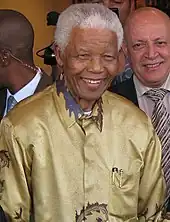




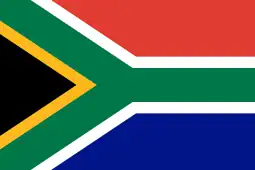

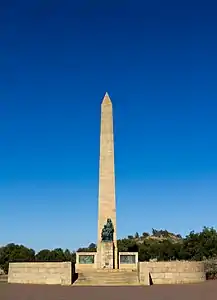
-001.jpg.webp)

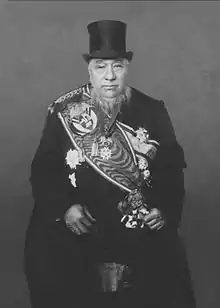


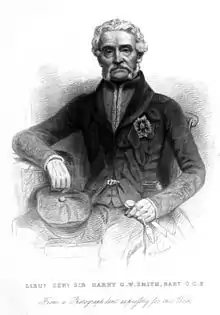

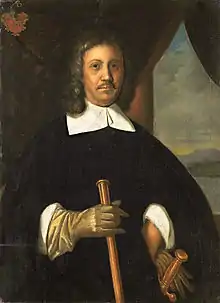
.jpg.webp)


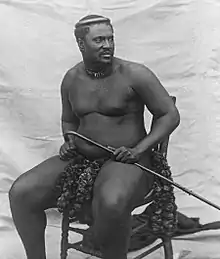



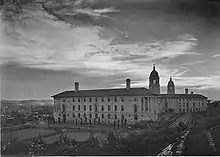

.JPG.webp)





.jpg.webp)




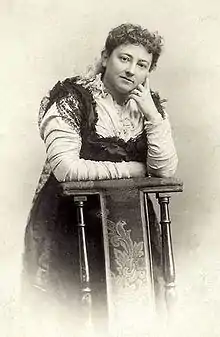
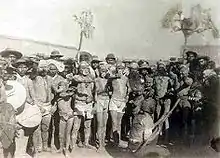





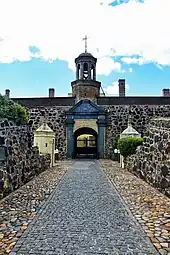



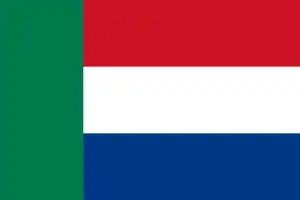







_-_The_Voortrekkers.jpg.webp)